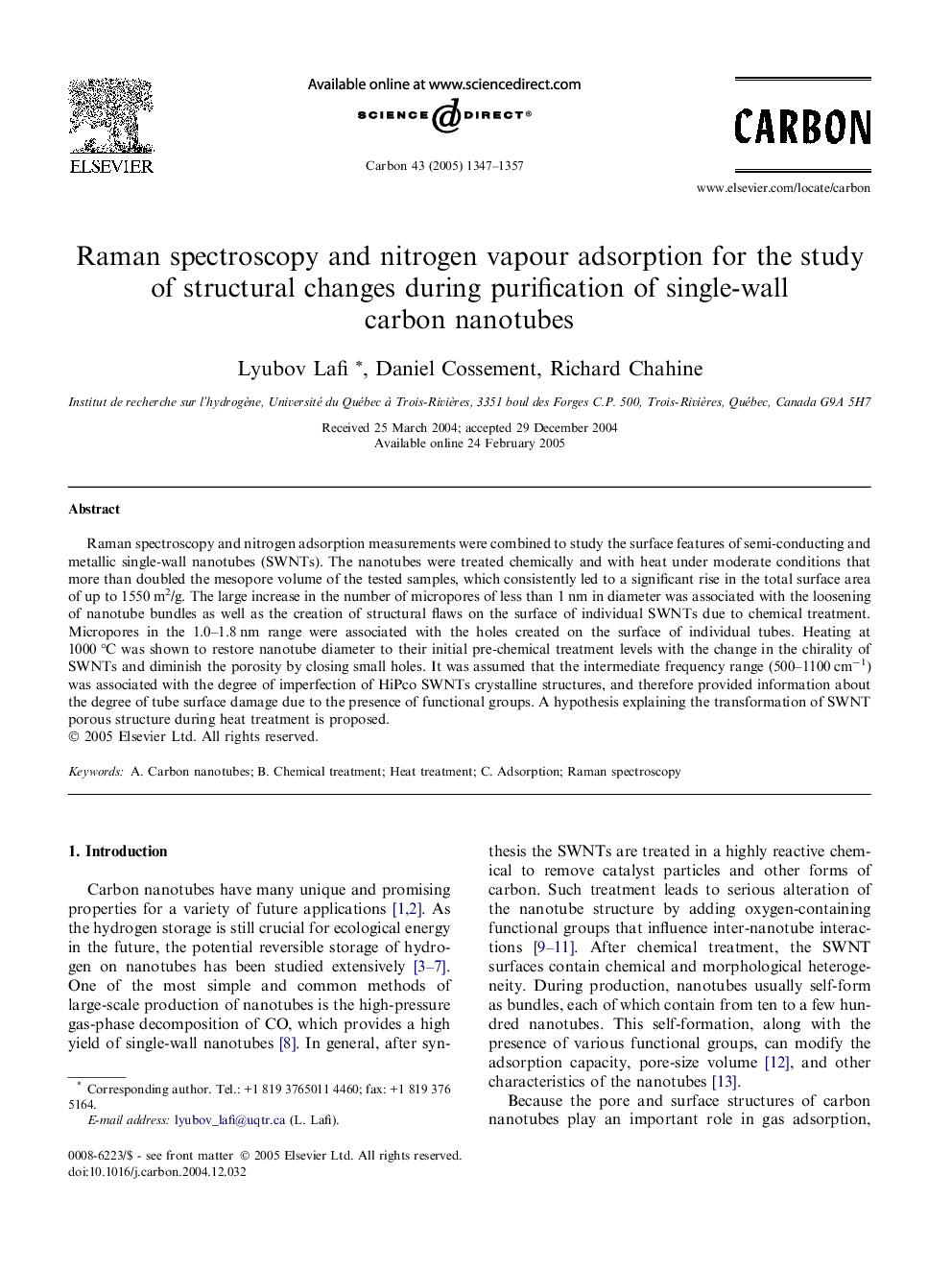| Article ID | Journal | Published Year | Pages | File Type |
|---|---|---|---|---|
| 10611272 | Carbon | 2005 | 11 Pages |
Abstract
Raman spectroscopy and nitrogen adsorption measurements were combined to study the surface features of semi-conducting and metallic single-wall nanotubes (SWNTs). The nanotubes were treated chemically and with heat under moderate conditions that more than doubled the mesopore volume of the tested samples, which consistently led to a significant rise in the total surface area of up to 1550 m2/g. The large increase in the number of micropores of less than 1 nm in diameter was associated with the loosening of nanotube bundles as well as the creation of structural flaws on the surface of individual SWNTs due to chemical treatment. Micropores in the 1.0-1.8 nm range were associated with the holes created on the surface of individual tubes. Heating at 1000 °C was shown to restore nanotube diameter to their initial pre-chemical treatment levels with the change in the chirality of SWNTs and diminish the porosity by closing small holes. It was assumed that the intermediate frequency range (500-1100 cmâ1) was associated with the degree of imperfection of HiPco SWNTs crystalline structures, and therefore provided information about the degree of tube surface damage due to the presence of functional groups. A hypothesis explaining the transformation of SWNT porous structure during heat treatment is proposed.
Related Topics
Physical Sciences and Engineering
Energy
Energy (General)
Authors
Lyubov Lafi, Daniel Cossement, Richard Chahine,
